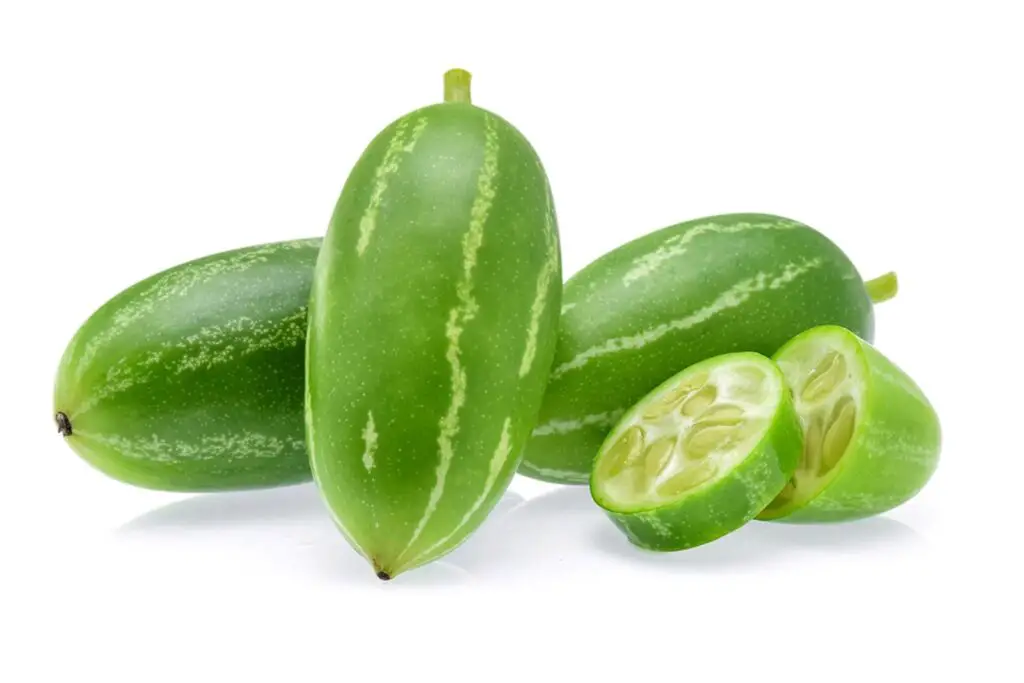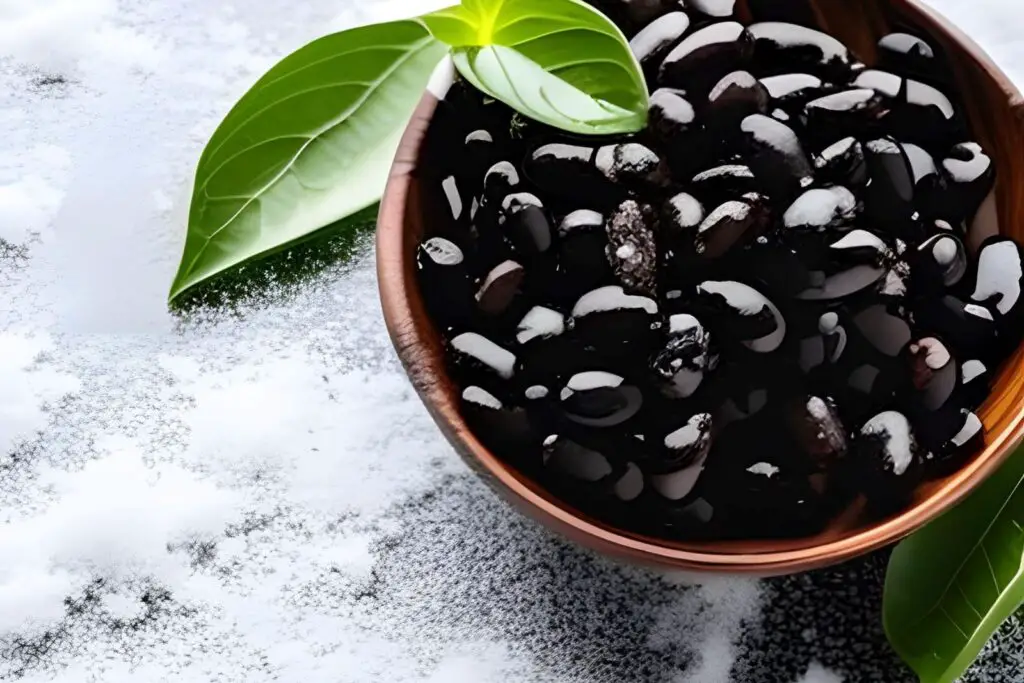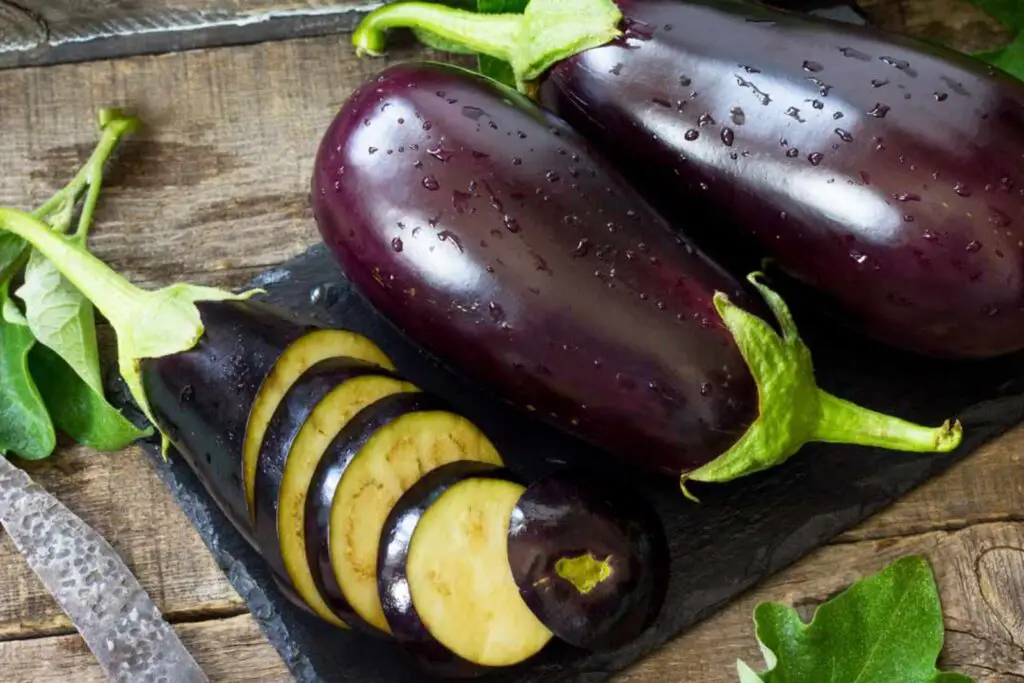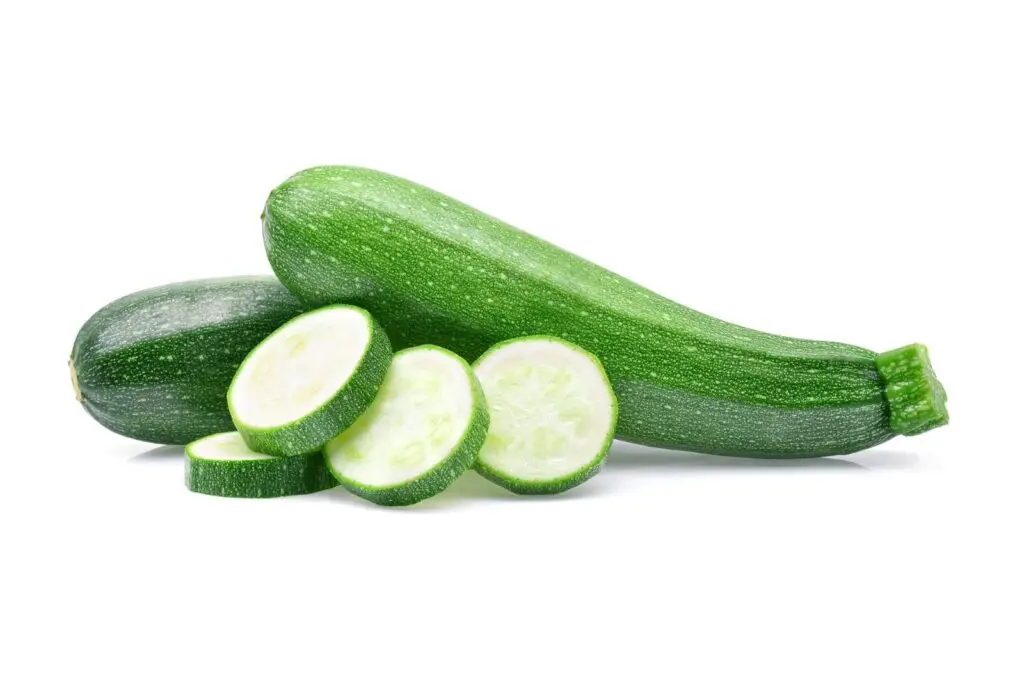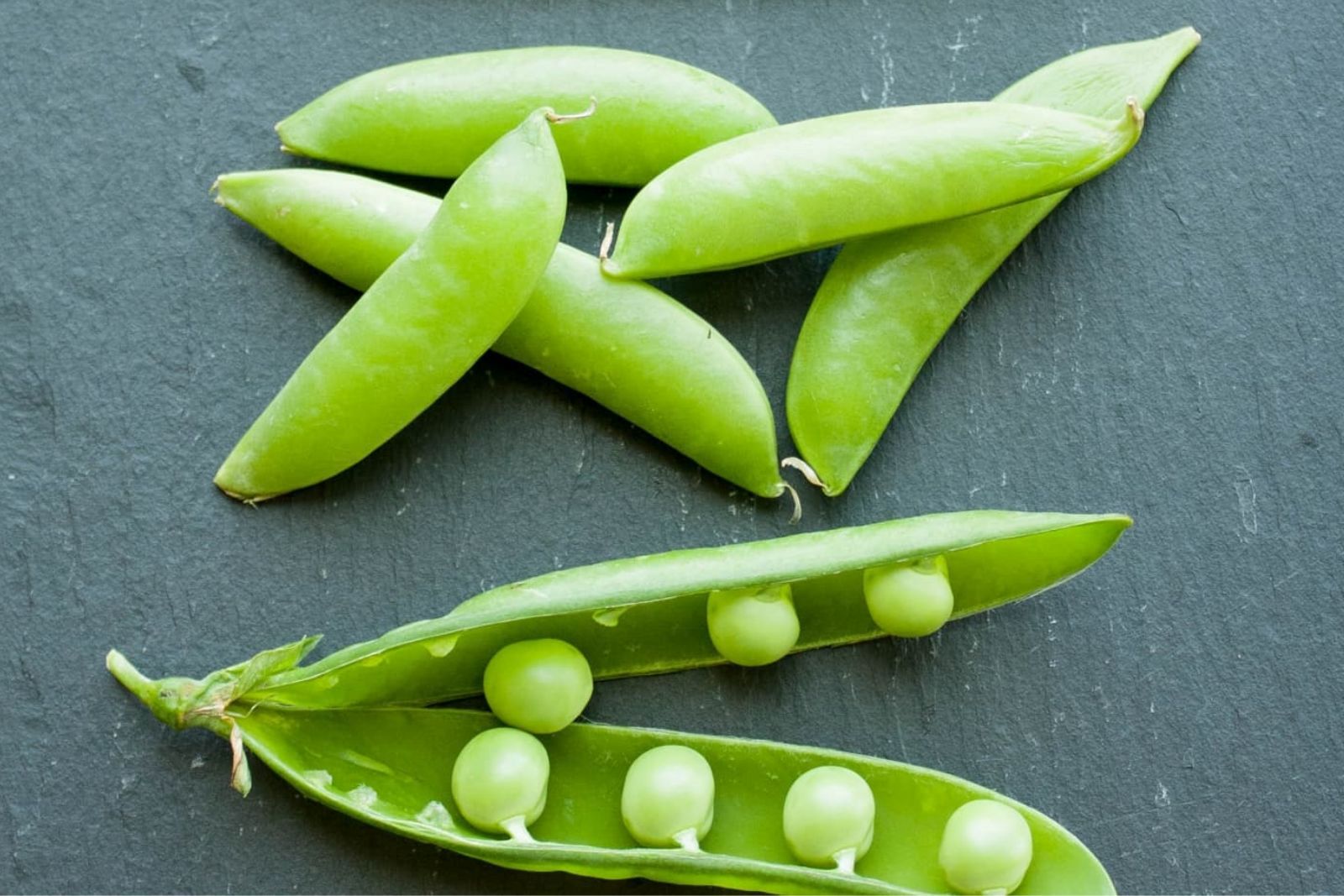
Snap peas, with their crisp texture and sweet flavor, are a delightful addition to meals and snacks. Whether you have an abundant harvest from your garden or found fresh snap peas at the market, knowing how to properly freeze them allows you to enjoy their goodness long after the growing season ends. Freezing snap peas not only preserves their vibrant color and nutritional value but also ensures that you have a versatile ingredient ready for stir-fries, salads, or any recipe that calls for a touch of freshness. In this guide, we will take you through the steps to freeze snap peas effectively, so you can savor their taste and goodness throughout the year.
Here are the simple steps to freeze snap peas:
Step 1: Select Fresh Snap Peas
Freezing snap peas begins with choosing the right product. Opting for fresh and high-quality snap peas is crucial to ensure the best results when freezing. Here’s why selecting the right snap peas matters:
- Firmness: Look for snap peas that feel firm to the touch. Gently squeeze them between your fingers to check for any signs of softness or sponginess. Firm snap peas indicate that they are at their peak freshness and will maintain their texture during the freezing process.
- Bright Green Color: The color of snap peas is an excellent indicator of their freshness. Choose snap peas that are vibrant and bright green in color. Dull or yellowing snap peas may be past their prime and may not freeze as well or retain their natural color after thawing.
- Blemishes and Wilting: Inspect the snap peas for any blemishes, such as spots, discoloration, or signs of decay. Also, ensure they are free from wilting or shriveling. Fresh snap peas should appear plump and crisp, indicating that they are in optimal condition for freezing.
- Peak Ripeness: For the best taste and texture after freezing, it is ideal to harvest or purchase snap peas when they are at their peak ripeness. This is when they have reached their maximum flavor and sweetness. Check for signs of maturity, such as fully developed pods and well-developed peas inside. Harvesting snap peas at the right time ensures that they retain their taste and quality even after freezing.
By carefully selecting fresh snap peas, you set the foundation for successful freezing. The firmness, vibrant color, absence of blemishes, and optimal ripeness ensure that your frozen snap peas will maintain their delicious flavor, crispness, and nutritional value.
Can I freeze snap peas from my garden?
Yes, you can freeze snap peas from your garden to preserve their freshness and flavor. The process of freezing snap peas is similar regardless of their source. It is important to select fresh, high-quality snap peas, wash them, blanch them, dry them, portion them, and package them appropriately before placing them in the freezer for long-term storage.
Can I freeze snap peas that have already been cooked?
While it is possible to freeze snap peas that have already been cooked, their texture may change during the freezing and thawing process. Cooked snap peas tend to become softer when frozen, which may alter their original texture. It is important to note that the flavor and quality of the cooked snap peas may also be slightly affected.
Step 2: Wash and Blanch
The next step in the freezing process is washing and blanching them. Here’s a detailed explanation of why these steps are important:
- Washing: Begin by washing the snap peas thoroughly under cool running water. This helps remove any dirt, debris, or residues that may be present on the surface. Gently rub the snap peas with your hands to ensure a thorough cleaning. If needed, you can use a vegetable brush to remove stubborn dirt. Washing the snap peas ensures that you freeze them in a clean and hygienic state.
- Trimming: While not mandatory, you may choose to trim the ends of the snap peas. This step is optional and depends on personal preference or recipe requirements. Trimming the ends can create a neater appearance and remove any tough or stringy parts.
- Blanching: Blanching is a crucial step in the freezing process for snap peas. It involves briefly boiling the snap peas and then rapidly cooling them. Here’s why blanching is important:
- Preservation of Color: Blanching helps preserve the vibrant green color of snap peas. It inactivates enzymes present in the peas that can cause discoloration and loss of brightness during freezing and storage.
- Retention of Flavor and Texture: Blanching also helps to lock in the flavor and maintain the crispness of the snap peas. The brief boiling time helps to partially cook the peas, making them more tender and reducing the risk of them becoming mushy or overcooked during freezing and subsequent preparation.
- Enzyme Inactivation: Enzymes naturally present in snap peas can cause the loss of nutrients and changes in flavor and texture over time. Blanching helps inactivate these enzymes, extending the shelf life of the snap peas and preserving their nutritional value.
- Boiling and Cooling: To blanch snap peas, bring a pot of water to a rolling boil. Submerge the snap peas in the boiling water for 1-2 minutes. The exact timing may vary slightly depending on the size and thickness of the snap peas. Then, promptly transfer the blanched snap peas to a bowl filled with ice water. The ice water bath halts the cooking process and rapidly cools down the snap peas, preventing them from overcooking.
By washing the snap peas and blanching them, you ensure that they are clean, retain their vibrant color, and maintain their flavor, texture, and nutritional value throughout the freezing process.
Step 3: Drain and Dry
The next crucial step is to drain them well and ensure they are dry before freezing. Here’s why draining and drying are important:
- Removal of Excess Moisture: Blanched snap peas tend to retain some moisture from the boiling and ice water bath. It’s important to remove this excess moisture before freezing. Excess moisture can lead to the formation of ice crystals during freezing, which can negatively impact the texture and quality of the snap peas.
- Prevention of Freezer Burn: Freezer burn occurs when moisture on the surface of food evaporates and forms ice crystals. These ice crystals can dehydrate the snap peas, causing them to become dry and develop an undesirable texture. By draining and drying the snap peas, you minimize the chances of freezer burn and ensure that the frozen snap peas maintain their taste and quality.
- Even Freezing: Removing excess moisture helps the snap peas freeze more evenly. If snap peas are frozen with excess water droplets, they can freeze into clumps or form icy patches, making them difficult to separate or causing them to stick together. Proper draining and drying promote individual freezing, allowing you to easily portion and use the desired quantity later.
Here are some tips for draining and drying the blanched snap peas:
- Use a colander or strainer to drain the snap peas, allowing any excess water to flow away.
- After draining, gently pat the snap peas dry with a clean kitchen towel or paper towels. Be careful not to crush or damage the snap peas while drying.
- Ensure that the snap peas are completely dry before proceeding to the next step of packaging and freezing.
By draining and drying the blanched snap peas, you eliminate the excess moisture, minimize the risk of freezer burn, promote even freezing, and preserve the snap peas’ quality during their freezer time.
Step 4: Portion and Pack
The next step is to portion and package them appropriately for freezing. Here’s why portioning and proper packaging are important:
- Portioning for Convenience: Portioning the snap peas before freezing allows you to easily retrieve the desired quantity when needed. Consider your usage preferences and portion the snap peas accordingly. You can freeze them in individual servings or larger family-sized portions based on your needs and the recipes you plan to prepare.
- Preventing Freezer Burn: Freezer burn can occur when air comes into contact with the snap peas during freezing. It causes the moisture on the surface of the snap peas to evaporate, leading to dehydration and the development of unappealing textures. By packaging the snap peas in a way that minimizes air exposure, you can help prevent freezer burn and maintain the quality of the snap peas.
- Selecting Freezer-Safe Containers or Bags: Choose freezer-safe containers or bags specifically designed for long-term storage in freezing temperatures. These containers should be airtight to prevent air and moisture from entering. Freezer-safe bags with zipper seals or airtight containers with secure lids work well for freezing snap peas.
- Removing Excess Air: Air exposure can lead to the formation of ice crystals and deteriorate the quality of the snap peas. When packaging the snap peas, try to remove as much air as possible from the bags or containers before sealing them. This will help maintain the snap peas’ texture, flavor, and nutritional value during their time in the freezer.
- Labeling for Easy Reference: It’s important to label the bags or containers with the date of freezing. Snap peas can be stored in the freezer for up to 12 months, but it’s best to consume them within the first 6 months for optimal taste and texture. Labeling ensures that you can easily track the freezing date and prioritize the usage of older snap peas first.
To portion and package the snap peas:
- Divide the blanched and dried snap peas into portion sizes that suit your needs. Consider how much you typically use in a single meal or recipe.
- Place the snap peas into freezer-safe bags or airtight containers, leaving some space at the top to allow for expansion during freezing.
- Press out excess air from the bags or containers before sealing them. For bags, squeeze out the air and seal them tightly. For containers, press the lid firmly to create a tight seal.
- Label the bags or containers with the date of freezing using a permanent marker. This will help you keep track of their storage time.
By portioning and packaging the blanched snap peas appropriately, you ensure convenience, minimize the risk of freezer burn, and maintain the quality of the snap peas throughout their time in the freezer.
Step 5: Store in the Freezer
It’s time to transfer them to the freezer for long-term storage. Here’s why freezing and proper storage are important:
- Freezing for Preservation: Freezing snap peas preserves their freshness, flavor, and nutritional value. Freezing halts the natural deterioration process, allowing you to enjoy the snap peas even when they are out of season.
- Single Layer Arrangement: If possible, arrange the packaged snap peas in a single layer in the freezer. This allows for faster freezing because the cold air can circulate more evenly around the individual snap peas. It also makes it easier to separate and use the desired quantity later without thawing the entire batch.
- Freezer Temperature: Set your freezer temperature to 0°F (-18°C) or below. This low temperature ensures that the snap peas remain frozen solid, maintaining their quality over an extended period. It also helps prevent the growth of microorganisms that can lead to food spoilage.
- Storage Duration: Snap peas can be stored in the freezer for up to 12 months, but their quality is best maintained within the first 6 months. Over time, the snap peas may gradually lose their texture and flavor. It is recommended to consume them within the first 6 months for the most optimal taste and texture. Labeling the packaging with the freezing date will help you keep track of their storage duration.
To freeze and store the snap peas:
- Transfer the packaged snap peas to the freezer as soon as possible after packaging.
- If possible, arrange them in a single layer, ensuring that the packages are not stacked or crowded together. This allows for better airflow and faster freezing.
- Set the freezer temperature to 0°F (-18°C) or below to maintain the snap peas’ quality.
- Avoid frequent temperature fluctuations by keeping the freezer door closed as much as possible.
- Consume the snap peas within 6 months for the best taste and texture. While they can be stored for up to 12 months, longer storage may result in a gradual decline in quality.
By freezing the snap peas at the correct temperature, arranging them in a single layer, and consuming them within the recommended time frame, you ensure that the snap peas retain their freshness, flavor, and nutritional value for a prolonged period of time.
Step 6: Thaw the Frozen Snap Peas
When you want to use frozen snap peas, it’s important to thaw them properly to maintain their quality and ensure food safety. Here’s how to thaw and use frozen snap peas:
- Thawing in the Refrigerator: To thaw the snap peas, remove the desired portion from the freezer. Place the frozen snap peas in a container or bowl and let them thaw in the refrigerator. Thawing in the refrigerator is the safest method as it allows for a slow and controlled thawing process. Leave the snap peas in the refrigerator overnight or for a few hours until they are completely thawed.
- Avoid Room Temperature Thawing: It’s important to avoid thawing the snap peas at room temperature. Thawing at room temperature can lead to uneven thawing and create a favorable environment for bacterial growth. This can compromise the safety and quality of the snap peas. Always opt for refrigerator thawing or other safe methods.
- Using Thawed Snap Peas: Once the snap peas are thawed, they can be enjoyed in various ways. Here are a few options:
- Raw: Thawed snap peas can be enjoyed raw in salads or as a crunchy snack. They add a fresh and crisp texture to your dishes.
- Stir-Fried or Sautéed: Thawed snap peas can be quickly stir-fried or sautéed with other vegetables or proteins. This method helps retain their vibrant color, crispness, and nutritional value.
- Steamed: Steam the thawed snap peas briefly until they are tender yet still slightly crunchy. Steaming helps preserve their texture and flavor.
- Added to Recipes: Thawed snap peas can be added to a wide range of recipes, such as soups, stews, pasta dishes, and stir-fries. They can be used as a delicious and nutritious ingredient that complements various flavors and cuisines.
- Storing Thawed Snap Peas: If you have any leftover thawed snap peas, store them in an airtight container in the refrigerator. Consume them within a few days to maintain their quality.
By properly thawing the snap peas in the refrigerator and using them in your preferred cooking methods, you can enjoy the flavor, texture, and nutritional benefits of the snap peas as if they were freshly harvested.
Other related questions
Can you refreeze snap peas?
It is generally not recommended to refreeze snap peas once they have been thawed. When snap peas are thawed, the freezing and thawing process can affect their texture, quality, and overall freshness. Refreezing snap peas can lead to further deterioration in taste and texture, resulting in a less desirable eating experience. It is best to plan portion sizes and thaw only the amount needed to minimize the need for refreezing.
How do I know if the snap peas have gone bad after being frozen?
To determine if snap peas have gone bad after being frozen, look for signs of freezer burn, such as dry, discolored patches or a leathery texture. Excessive ice crystals and a mushy consistency can also indicate deterioration. Additionally, a significant loss of vibrant green color, off-putting odors, or a sour taste are indicators that the snap peas may have spoiled and should not be consumed.
Are there any special considerations for freezing snap peas?
When freezing snap peas, there are a few special considerations to keep in mind. Firstly, blanching the snap peas before freezing helps preserve their color, flavor, and nutrients. Secondly, it is important to dry the snap peas thoroughly after washing to prevent the formation of ice crystals and freezer burn. Lastly, proper packaging in freezer-safe bags or containers, removing excess air, and labeling with the freezing date is essential for maintaining the quality and organization of frozen snap peas.
Are there any alternative methods for preserving snap peas aside from freezing?
Yes, there are alternative methods for preserving snap peas aside from freezing. One option is canning, where snap peas are preserved in jars using a canning process. Another method is pickling, which involves immersing snap peas in vinegar-based brine to extend their shelf life. Additionally, snap peas can be dehydrated to create dried snap peas, which can be stored in airtight containers for long-term preservation.

